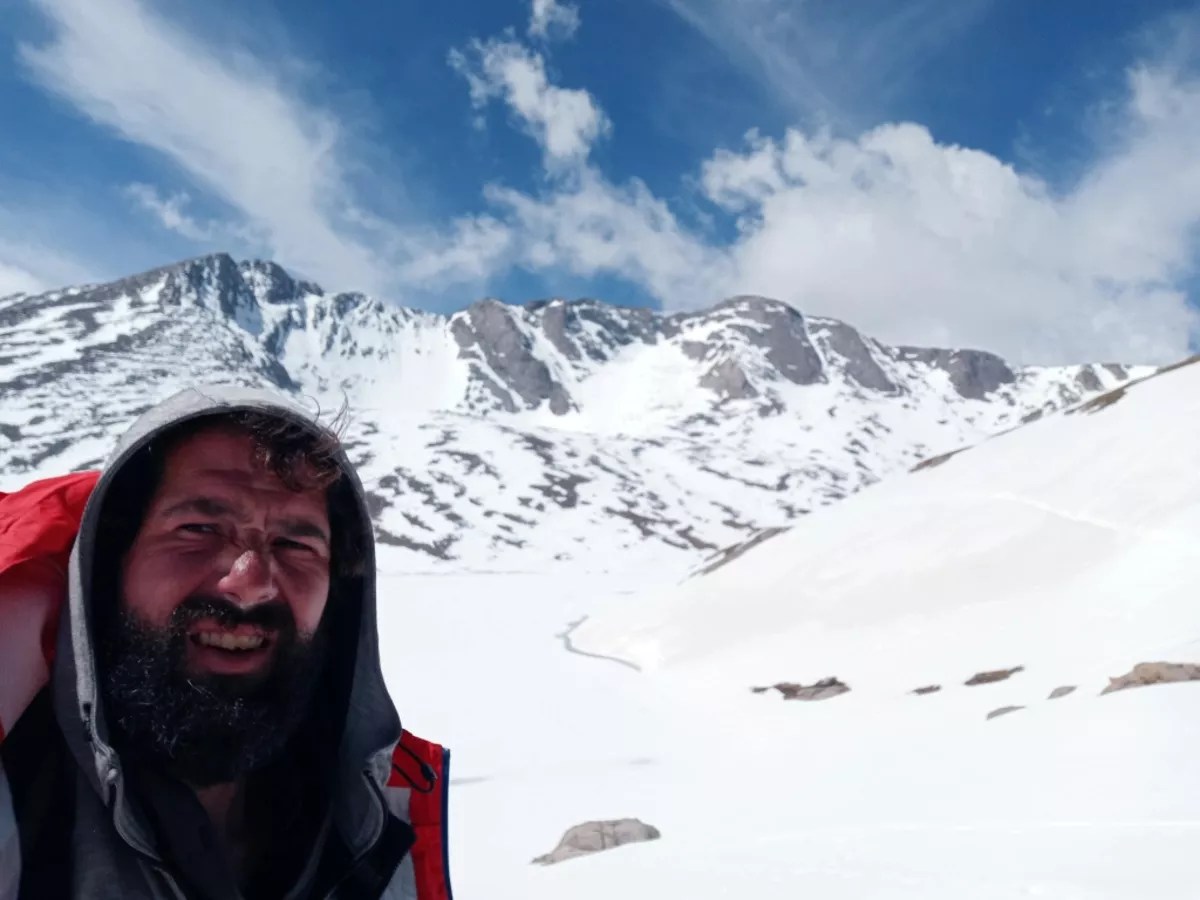
Courtesy of Bryan Scarbeary

Audio By Carbonatix
Most Coloradans will wait until summer melts a clear path before heading to the summit of one of the state’s fourteeners, rather than trudge through the snow that make these routes impassable most of the year.
But 37-year-old Bryan Scarbeary, a Denver native who hopes one day to climb Mount Everest, didn’t want to wait until spring was over before tackling Colorado’s highest peak, Mount Evans.
As a child, he’d been taught camping and survival skills by his father, and his love of stone formations continued to grow as he studied architecture and European castles while he was at Red Rocks Community College. He kept climbing as an adult, bouncing between jobs that let him travel (he’s currently working with contractors on estimating the cost of projects). And after poring over a “huge” manual that describes attempts to scale Mount Everest, he made it his goal to “at least get to base camp, 20,000 feet,” he says.
He started thinking about challenging climbs in his home state that could help him prepare, and 14,265-feet-high Mount Evans seemed like good practice, because a hiker can get to the summit “without a rope on your back, but you do have to know how to survive,” he says, adding that it also requires “good decisions.”
His first decision was that starting from a trailhead at the base of the mountain would be too easy. He thought about the view of Mount Evans from Hampden Avenue, and realized that it would make the hike more meaningful if it began at the hospital where he was born, Swedish Medical Center, at 501 East Hampden.
He started training for the 75-mile trek in November, hiking accessible trails along the Front Range, including around Green Mountain in Lakewood and Table Mountain in Golden, and building up “mental rigor” to get over the urge to just go back home, he recalls. He was also “homing in on not getting injured,” because twisted ankles or broken bones would have ended the journey…and maybe returned him to the hospital where it began.
Scarbeary didn’t wait for summer, starting his journey on May 24. He’d wanted to leave earlier, but “it wasn’t hot enough,” he says. And even after waiting, he still set off in heavy rain, packing two pairs of Merrell boots, a 75-liter backpack, a tarp, a two-person tent and about sixty pounds of gear.
One of the benefits of starting from Swedish was being able to hike along the Platte River, where he found open space to sleep. “Through the city, it’s a lot more touch-and-go,” he says. “You’re not making camp, you’re just resting for a minute, then moving on. A big part of it is really respecting the environment, because you don’t want to be part of the confusion or pollution.”
Scarbeary took the Platte River Trail north and stayed a night on the trail, using his tarp to pitch a bivouac and stay out of the rain. He followed the Platte until he could turn west along Clear Creek Trail, then took that all the way to Golden.
From Golden, he followed back roads along Interstate 70 toward Genesee, then continued to hook south to Evergreen. Scarbeary used to live in Evergreen and knew it had spots by the lake for camping; he could also visit bars and restaurants and wash his clothes in town. “They’ve got just a little bit of everything here and there,” he says.
Evergreen also gave Scarbeary a chance to dry off while he waited for a perfect two- to three-day window without rain to finish his hike.
On June 8, the rain started to ease up, so he set off on a final push to the summit.
He’d originally wanted to take the north face of Mount Evans past the Idaho Springs Reservoir, “but it was just too muddy,” he recalls. So instead, he went along Mount Evans Road, which was plowed, and up the south face via “twenty to thirty huge” switchbacks, a five-mile stretch that took him up 2,000 feet in elevation.
Scarbeary reached the summit on June 11.
“When I got to the top, it was like, ‘All right, seven months of training were totally successful,'” he says. “We love nature out here in Colorado. It’s what differentiates this part of the planet, because you have to stop in front of those mountains.”
Scarbeary hopes to climb Mount Everest in 2030; he’ll use the next seven years to train around Colorado…even in bad weather. For those who want to follow in his footsteps, he recommends making sure “your gear is good to go” and getting a sense of “how wet you can get before having to change shoes or clothes.”
Other than that, he advises: “Take your time.”